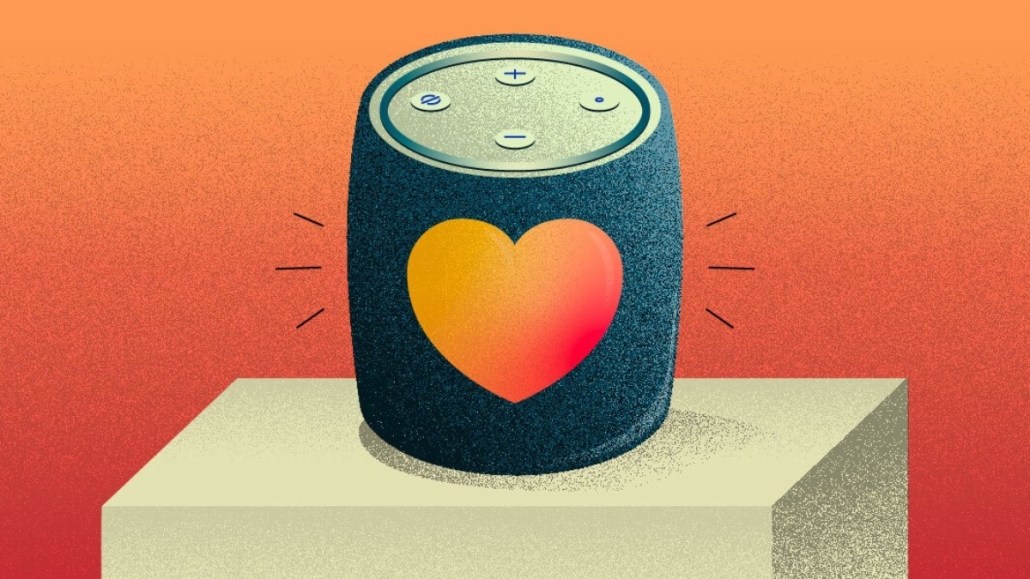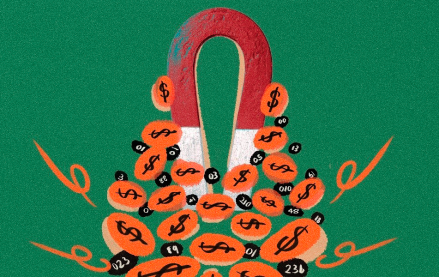
Sponsored by Amazon Ads
Podcasts are a powerful medium for sharing stories, and listeners worldwide are drawn to this type of immersive audio storytelling. According to eMarketer, half of U.S. adults ages 35–44 and 60% of U.S. adults ages 18–34 are monthly podcast listeners. As more consumers are drawn to streaming audio, brands are taking notice and adapting their omnichannel approach accordingly.
“Now, more than ever, brands are seeking ways to authentically engage with their customers in key moments throughout their day — many of which are screen-free,” said Anuj Chadha, senior manager of audio advertising at Amazon Ads. For many people, these moments include listening to streaming audio content such as music and podcasts.
These formats are often an emotionally-charged experience, making this a pivotal opportunity for brands to reach consumers at heightened moments and build deep and meaningful connections.
Amazon Ads and Wondery recently worked with a third-party neuroscience marketing firm to explore the science of brand building with sound. The study collected engagement readings and survey responses from 180 U.S. adult participants (18 years or older) who opted-in to participate in exchange for monetary compensation. The study revealed significant findings about how streaming audio content and the device used to listen can impact engagement, brand perception and help drive conversions.
Ad position: web_incontent_pos1
Streaming audio content results in improved moods and increased engagement
Each participant in the study was surveyed before, during and after every listening session. Nearly a third of participants (30%) described a positive change in mood after their podcast and/or music listening sessions. Furthermore, the emotions most commonly reported after a listening session were “happy,” “optimistic” and “confident.”
Ad position: web_incontent_pos2
The study also measured engagement, defined by various physiological responses detected by a device that participants held while listening to streaming audio. The results show significant engagement differences based on both the media channel and the device used to listen to the audio content.
Compared to benchmark engagement scores for broadcast radio and linear television, streaming audio resulted in statistically significantly higher engagement (+1.6x and +1.4x greater engagement than broadcast radio and linear TV, respectively). Additionally, participants who listened on smart speakers demonstrated greater engagement than those who listened to the same content on mobile, laptops or desktop computers.
The researchers hypothesized that the interactive nature of smart speakers might trigger engagement in the brain. According to Chadha, “With the emergence of smart speakers, audiences can now have a two-way dialogue with their favorite brands. And for brands, this innovation opens up new opportunities to connect with audiences using the power of sound.”
Smart speakers drive full-funnel outcomes
Aside from driving higher engagement levels, the study also highlighted other findings specific to ads delivered through ad-supported content on smart speakers.
For example, compared to ads delivered via mobile or laptop/desktop, those delivered on smart speakers were perceived more favorably. Listeners reported that ad-supported content delivered on smart speakers is more relevant, entertaining and less disruptive. These positive feelings translated to a lift in brand perception. For example, 58% of participants agreed that brands advertising via ad-supported audio content on smart speakers are innovative, and 70% agreed they are higher quality than those that don’t advertise in such channels.
Audio delivered through ad-supported content on smart speakers also drove increased outcomes at each stage of the purchase funnel. From ad recall to purchase intent, streaming audio delivered on smart speakers produced the best results. A contributing factor to these outcomes is the ability to include a voice-enabled CTA in a smart-speaker-specific ad. As Chadha explained, “audio ads with interactive calls-to-action are more likely to grow brand awareness, favorability and even purchase intent compared to audio ads without interactive CTAs.”
With the help of smart speakers, brands can give consumers the immediate ability to learn more about a product, have more information sent to their email or even add items to their cart to purchase simply by using their voice. These options provide audiences with helpful and relevant next steps and encourage them to act at the moment when the message is fresh in their minds.
Selecting the right streaming audio media mix is key to meeting campaign objectives
While participants commonly reported positive emotions overall, different music and podcast genres were found to drive different emotions. For example, true crime podcasts drove feelings of trust and sadness, while Latin music drove feelings of confidence.
The study also found that specific genres are more likely to drive higher engagement for particular industries. For instance, automotive ads outperformed when delivered in rock music when compared to other content, and entertainment ads performed better in True Crime podcast, Pop and R&B music content.
The research uncovered how music and podcasts drove different outcomes depending on marketing objectives. While ad-supported content in music outperformed podcasts in driving brand favorability and ad recall, podcasts took the top spot for driving purchase intent and trust in the ad.
Selecting the right audio content helps brands meet audiences when they’re most receptive to brand messaging and drive their desired outcome. Choosing a mix of placements in podcast and music genres increases the likelihood that a brand will drive full-funnel results.
As consumers become increasingly omnichannel with their shopping, brands should consider thinking outside the box — or the screen — to connect with them in crucial moments throughout the day. As this study revealed, audio content is an impactful channel to help enable brands to do just that. Especially when delivered via ad-supported content on smart speakers, explained Chadha, “streaming audio can help brands reach, engage and start a dialogue with audiences in moments where they are feeling positive and receptive to brand messaging,” making it a valuable part of the modern media mix.
Sponsored By: Amazon
More from Digiday
Sliders test article
Agencies hope connected TV and digital out-of-home will play a bigger role in upcoming elections and politics — especially for smaller media agencies that are handling many of the less visible races in the crowded political space. For a number of media agencies looking to place their political ad dollars down in this major election […]

How CTV and DOOH are growing this political season for smaller agencies
Connected TV and digital out-of-home are playing a bigger role in upcoming elections and politics – especially for smaller agencies looking to place clients’ dollars.

CMO Strategies: Advertisers identify the top attributes on ad-supported streaming platforms
This is the third installment in Digiday’s multi-part series covering the top ad-supported streaming services and part of Digiday’s CMO Strategies series. In this report, we examine which ad attributes matter the most to marketers on streaming platforms.
Ad position: web_bfu